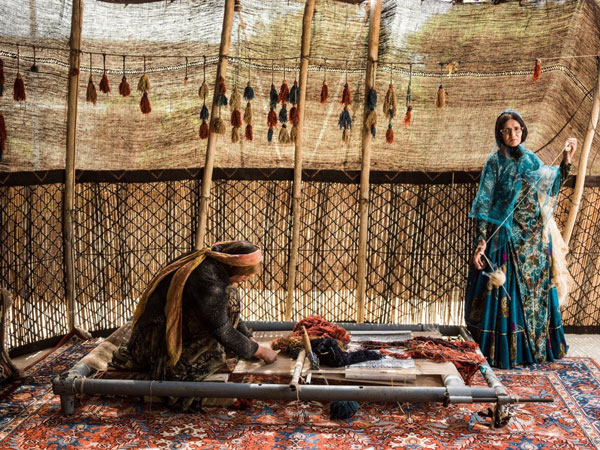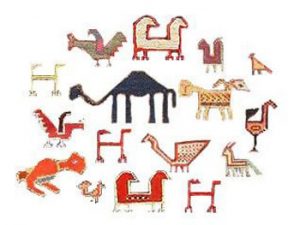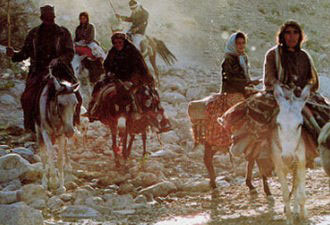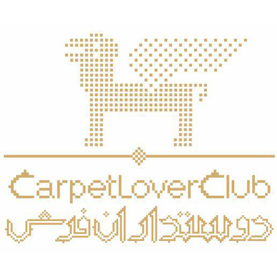nomadic handmade carpet: one of the most valuable and rarest persian rugs
mashhad handmade carpet: woven by high quality wool with flower pattern in center and borders
July 23, 2018persian handmade carpet material: silk, cotton and wool
July 24, 2018
A certain mystery and romance attaches to the concept of the oriental rug, but perhaps the most romanticized objects of this kind are the so-called nomadic or tribal Persian rugs. What distinguishes Persian rugs of this type is first of all the social and economic basis behind them. They were produced by peoples whose identity was organized around various tribes and clans. Their economy was depended on domesticated livestock, especially sheep and goats. Their style of life was that of a nomadic, tent-dwelling population that periodically had to move in search of grazing for its flocks, as opposed to a sedentary population based on agriculture. In Persia, the most well-known nomadic weavers are above all the Turkmen and Baluch tribes of the Northeast, the Khamseh, Afshar, and Bakhtiari, of the Southwest, and the Shahsavan of the Northwest Persia. In terms of Persian rug design, however, there is no single, unifying feature that one may define as nomadic. This does not include, of course, a taste for abstract geometric forms or highly geometric animal and floral rug motifs, a taste that is also typical of village weaving.
nomads and role of carpet weaving in their life
Today, millions of people live as nomads in the Orient raising sheep as their main income. The camps with black tents made of hair from goats, the large herds of goats, flock of sheep and the shepherds on their donkeys and horses still make a fascinating picture in the landscape. Nevertheless, a large part of the nomadic culture is disappearing as the nomads tend to be more “resident”. The reason for this is that they find areas where the conditions are so good that they can stay for longer periods without having to move so often. Slowly they are changing into some kind of “resident nomads”. Today most nomads get around with jeeps and motorcycles, a sight very different from the one we have with a nomad and his camel for example. In the olden days there was competition among the different nomadic tents. When a woman was working on her carpet she would seek inspiration from the surroundings and tried to be better than her neighbour. Since the picture has changed today, the motifs do not tend to be so artistic either. An old nomad carpet therefore is a good investment well worth to preserve for the future.
handmade carpet weaving by nomadic women
Carpets, kilims and bags of different sizes are important for the daily life of the nomads. Keeping their own animals provides them with materials for their weavings. The weaving take place on horizontal looms and the patterns which have been inspired by the surroundings of the nomads are passed on from generation to generation. The weavers do not use any kind of original, they knot the patterns and motifs from their memory. Even the nomads that are resident most time of the year knot carpets the same way. Carpets not needed within the family are sold at nearby bazaars under the name from the tribe where they were made. In the surroundings of the city of Shiraz live the largest nomadic federation in Iran, the Ghashghais. West of Isfahan we find the Bakthiaris and north of them the Loris. Close to the borders between Iran, Pakistan and Afghanistan live the Beluches. The look of the nomadic carpets varies a lot. You can see everything from carpets with very naive patterns, for example the Gabbeh carpet, to carpets with really throughout patterns and sometimes even figural motifs.
nomadic handmade carpet patterns

The tribal nomadic Persian rug design repertory has often been claimed to be incredibly ancient, involving motifs that stem from the timeless tribal culture of its weavers. But like those of village weaving, the designs of nomadic rugs originated as highly abstracted versions of city rug designs of floral, animal, or geometric medalliontype. They represent the creative artistic side of the normal economic relations existing between nomadic peoples and their sedentary village and urban neighbors. At times nomadic rugs, especially those of Turkmen, also adapted the much finer technique of urban Persian weaving, in contrast to the coarser weave found in most nomadic work. The truly distinctive aspects of nomadic weaving are primarily technical. As the products of tent-dwelling peoples they tend to be woven on horizontal looms set up on the ground rather than on vertical looms set up in houses. And as the products of nomadic sheep-herding peoples, they also tend to be made entirely of wool, including the foundation of the rug.
characteristics of nomadic handmade carpet
This contrasts notably with city and tribal village rug production, which utilizes spun cotton, a sedentary agricultural product, for the rug foundation since cotton enables a more consistent tension allowing for straighter, more perfectly rectangular weaving. The format of nomadic rugs is also distinctive. They are not simply floor coverings, or at time cushions, of variable size like urban and village rugs. Instead they are also woven as storage bags, both large and small, hung on the tent walls or used on pack animals, effectively serving as nomadic equivalents of closets, cupboards, and chests or boxes.
Village carpets

A Persian home on the countryside contains only a few pieces of furniture and the carpets are the most important feature in a room. There is often a loom in one part of the house, where the women can be seen working on a carpet for their own use or to be sold to provide extra income for the household. The knowledge of this handicraft is inherited. The weavers usually only have a simple sketch instead of an original and this allows them more freedom during their work. The rough yarn does not allow for any advanced patterns, but the wool, which is of good quality, is tied to give the carpet a long lifetime. The carpets, not much bigger than dozar (200×140 cm) are often tied on a cotton warp with handspun wool from their own sheep, dyed with natural colours which have been collected by the weavers. The tradition and the feeling for the colours has been well preserved from earlier generations, usually from nomads or semi-nomads. The village carpets are often rustic, charming, easy to recognize and can be derived to the place of its origin such as Nahavand, Malayer, Tuiserkan. Another example of a typical village carpet is the Hamadan carpet. Someone with a bit more space at home perhaps place a larger loom and then employ a few weavers that will knot carpets on demand. A local carpetdealer supplies the weavers with patterns and yarns. From time to time he inspects the work so that the carpet is perfect in all ways. The finishing product tends to be more of a workshop carpet than a village carpet.
Ghashghai nomads carpets

The Ghashghai nomads are found in the Fars province in the southwest of Iran and they live in the provinces of Fars, Khuzestan and Southern Isfahan but mostly in the surroundings of Shiraz. They move twice a year, between the winter pasture near the Persian Gulf and the summer pasture up in the Zagros mountains where it is much cooler. During the move it is possible to see the men with their typical round hats, running together with their dogs, large flock of sheep and herds of goats, along the roads swirling with clouds of dust. The women in their colourful clothes move along with the help of donkeys and horses towards new camp grounds. The tents that they live in are often made from goat hair. The manufacturing of carpets as well as kelims, bags, ribbons and other decorations is an important contribution to the life of the nomads. The carpets have a typical red-brown ground colour. The pattern is tied from memory and often consists of a centrally placed medallion, repeated in all four corners. Humans, four legged animals, birds, trees and flowers are popular elements. Other patterns are collected from frescos and columns in Persepolis (Tacht-e-Jamshid in Persia ) the ceremonial capital during the Achmenids dynasty (550-330 B.C.). They are also wellknown for their beautiful sadle bags that are knotted for more practical reasons. The carpets are woven on horizontal looms and the weaver sits during the weaving process on the half made part of the carpet. Semi nomads, who are resident during part of the year, weave carpets in the same way. A specially well-woven carpet is know as a Kashkooli. Gabbeh signifies a rough and primitive nomadic carpet from the area. During the last decades, the weaver had to oblige to the western desires and began to use large brighter fields with few patterns in the Gabbeh carpets. Well-made Ghashghai carpets are attractive and durable products that tells a lot about the conditions of the nomadic life. The carpet is made entirely of wool from sheep and goats with some horse hair. Most of the Ghasghai nomads have now settled in towns and villages. Their carpets are therefore more directly influenced by market demands. These carpets in comparison to other nomadic tribal carpets are more coarsely woven and have cotton warps. More simple carpets from the area are sold under the name Shiraz. It is also the name of the provincial capital and in these bazaars the Ghashghai carpets are sold. The bazaars are also a common place where the nomads purchase other products they may use in their everyday life. Ghashghai carpets consist of a hexagon or diamond with four projecting hooks inside of a hooked diamond. Some Ghasghai pieces have the Hebatlu design (Hebatlu is the name of one of the one of the smaller Ghasghai tribes) and it consists of circular central medallion, and smaller designs similar to the central medallion repeated on each of the four corners of the carpet. The Ghasghai kelims tend to be woven in one piece with cotton sometimes used as highlights. The have simple designs and the warp is normally finished in long braids. The tribe that are well known for making the Kelims are the Amaleh and Darashuri.
